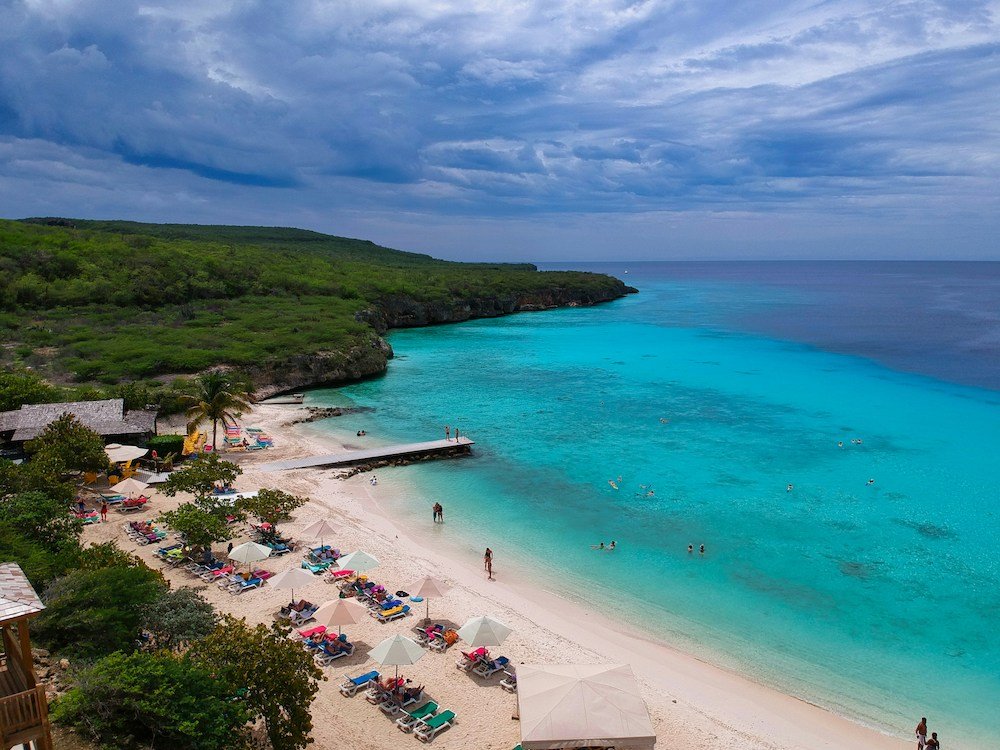
Curaçao Island, a jewel in the Caribbean Sea, offers an unparalleled blend of natural beauty, cultural richness, and vibrant experiences.
Nestled in the southern Caribbean, Curaçao is renowned for its stunning beaches, colorful architecture, and warm hospitality.
Let’s delve into what makes Curaçao an irresistible destination for travelers from around the globe.
Situated in the Lesser Antilles, Curaçao is one of the ABC islands, alongside Aruba and Bonaire.
Its strategic location near the coast of Venezuela makes it a gateway to the Caribbean, attracting visitors seeking tropical paradise and adventure.
Curaçao’s history is as captivating as its landscape.
Once a hub of trade and commerce during the Dutch colonial era, the island has evolved into a melting pot of cultures, blending African, European, and indigenous influences.
Curaçao’s allure lies in its diverse offerings tailored to every traveler’s taste. Here are several reasons why Curaçao continues to captivate tourists worldwide:
- Unspoiled Beaches: With over 35 pristine beaches dotting its coastline, Curaçao boasts some of the most breathtaking stretches of sand in the Caribbean. From secluded coves to bustling waterfronts, there’s a beach for every mood and activity.
- Rich Cultural Heritage: The island’s cultural tapestry is woven with a fascinating history and vibrant traditions. Visitors can explore centuries-old architecture in Willemstad, a UNESCO World Heritage Site, or immerse themselves in local festivals celebrating Curaçao’s diverse heritage.
- Thriving Marine Life: Curaçao’s underwater realm is a paradise for snorkelers and divers. Its crystal-clear waters teem with colorful coral reefs, exotic fish species, and hidden shipwrecks waiting to be explored.
- Warm and Welcoming Atmosphere: Curaçaoans, known for their warmth and hospitality, welcome visitors with open arms, making them feel right at home amidst the island’s tropical splendor.
- Adventure and Excitement: From hiking through rugged landscapes to embarking on adrenaline-fueled water sports, Curaçao offers endless opportunities for adventure seekers to unleash their inner explorer.
In essence, Curaçao’s magnetic charm lies in its ability to enchant visitors with a unique blend of natural wonders, cultural treasures, and unforgettable experiences.
Planning Your Trip to Curaçao
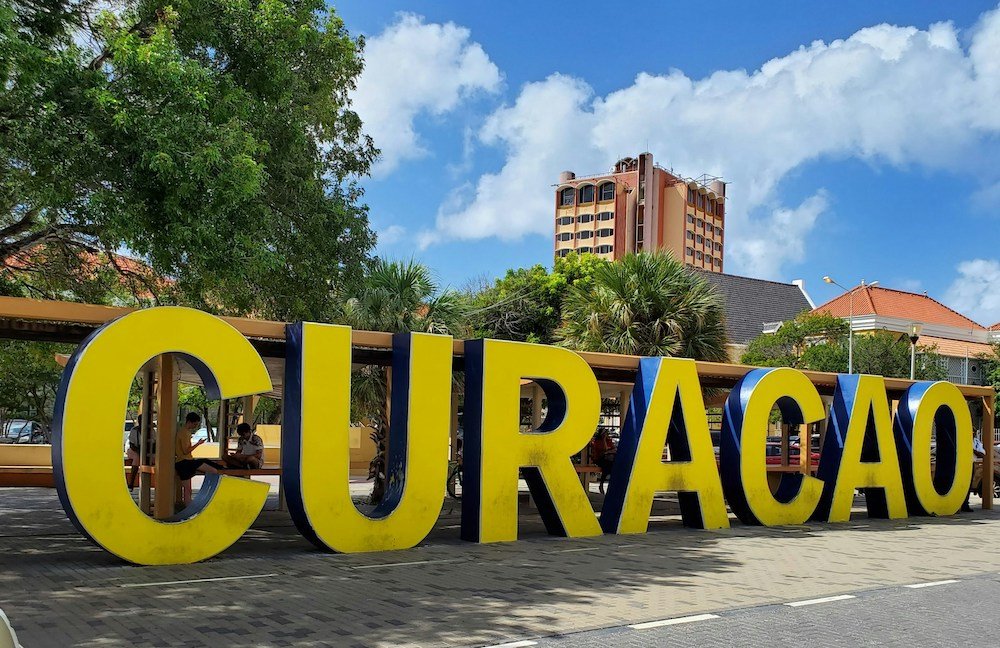
Embarking on a journey to Curaçao requires careful planning to ensure a seamless and memorable experience.
From understanding the best time to visit to navigating travel documentation and currency matters, here’s your guide to planning the perfect trip to Curaçao.
Best Time to Visit
Curaçao enjoys a warm and sunny climate year-round, making it an ideal destination for travelers seeking sunshine and relaxation.
However, the island experiences distinct seasons that may influence your travel plans.
- Peak Season (December to April): The dry season welcomes a surge of tourists seeking respite from winter weather elsewhere. Expect higher accommodation rates and bustling beaches during this period.
- Off-Peak Season (May to November): While temperatures remain balmy, this period experiences occasional rainfall and lower tourist traffic. Travelers can take advantage of discounted rates and quieter attractions during the off-peak season.
Visa Requirements and Travel Documents
Travelers to Curaçao must adhere to specific visa requirements based on their nationality. Fortunately, many visitors enjoy visa-free entry or visa-on-arrival privileges for short-term stays.
- Visa-Free Entry: Citizens of certain countries, including the United States, Canada, European Union member states, and others, can enter Curaçao for tourist purposes without a visa for up to 90 days.
- Visa Requirements: Travelers from countries not eligible for visa-free entry must obtain a tourist visa from the nearest Dutch embassy or consulate.
- Travel Documents: Ensure your passport is valid for at least six months beyond your planned departure date from Curaçao. Additionally, have your return ticket and proof of sufficient funds ready for immigration clearance upon arrival.
Currency and Money Matters
The official currency of Curaçao is the Netherlands Antillean guilder (ANG), although the US dollar is widely accepted at most establishments.
It’s advisable to carry a combination of cash and credit/debit cards for convenience.
- Currency Exchange: Exchange bureaus and banks are readily available in major tourist areas and airports. Be mindful of exchange rates and potential service fees when converting currency.
- ATM Accessibility: ATMs are prevalent across the island, allowing travelers to withdraw guilders or US dollars using international debit/credit cards. Verify any foreign transaction fees with your bank beforehand.
Language and Communication
Dutch, Papiamentu, and English are the primary languages spoken in Curaçao, with English widely understood and spoken in tourist areas.
- English Communication: Most locals, particularly in the hospitality industry, are proficient in English, facilitating seamless communication for international visitors.
- Papiamentu Phrases: Learning basic phrases in Papiamentu, such as greetings and expressions of gratitude, can enhance cultural exchange and enrich your travel experience.
Getting to Curaçao
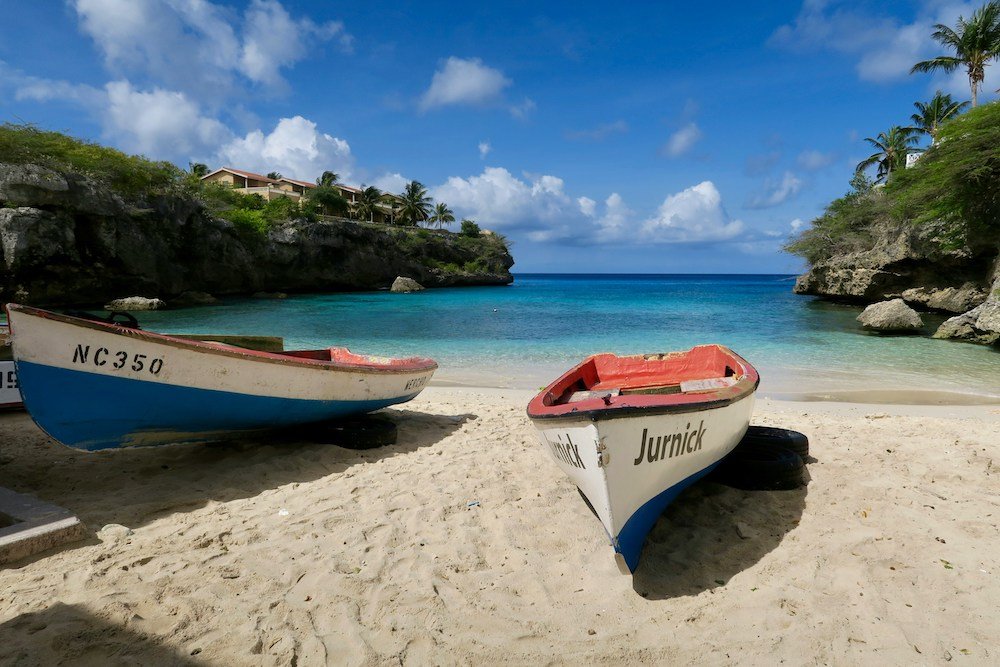
Whether you’re arriving by air or sea, Curaçao offers convenient access to travelers from around the world.
Explore the various transportation options available to reach this Caribbean paradise.
Air Travel Options and Major Airports
Curaçao International Airport (Aeropuerto Hato) serves as the primary gateway to the island, accommodating domestic and international flights from major cities across the globe.
- Direct Flights: Several airlines offer direct flights to Curaçao from key destinations in North America, Europe, and South America. Popular carriers include American Airlines, KLM Royal Dutch Airlines, and Air Canada, among others.
- Connecting Flights: For travelers originating from regions without direct service to Curaçao, convenient connecting flights are available through hubs such as Miami, Amsterdam, and Bogotá.
Upon arrival at Curaçao International Airport, travelers can easily access transportation options to their accommodations, including taxis, rental cars, and shuttle services.
Cruise Options and Ports of Call
Cruise enthusiasts can explore Curaçao’s charms by docking at one of its picturesque ports, offering a seamless transition from sea to shore exploration.
- Willemstad Cruise Terminal: Situated in the heart of Willemstad, the island’s capital, this bustling terminal welcomes cruise ships from leading cruise lines, including Carnival Cruise Line, Royal Caribbean International, and Norwegian Cruise Line.
- Activities and Excursions: Cruise passengers can embark on guided tours, beach excursions, and cultural experiences directly from the port, immersing themselves in Curaçao’s vibrant sights and sounds.
- Shopping and Dining: The Willemstad Cruise Terminal boasts an array of duty-free shops, restaurants, and local vendors, providing visitors with ample opportunities to indulge in shopping and culinary delights.
Accommodation Options in Curaçao
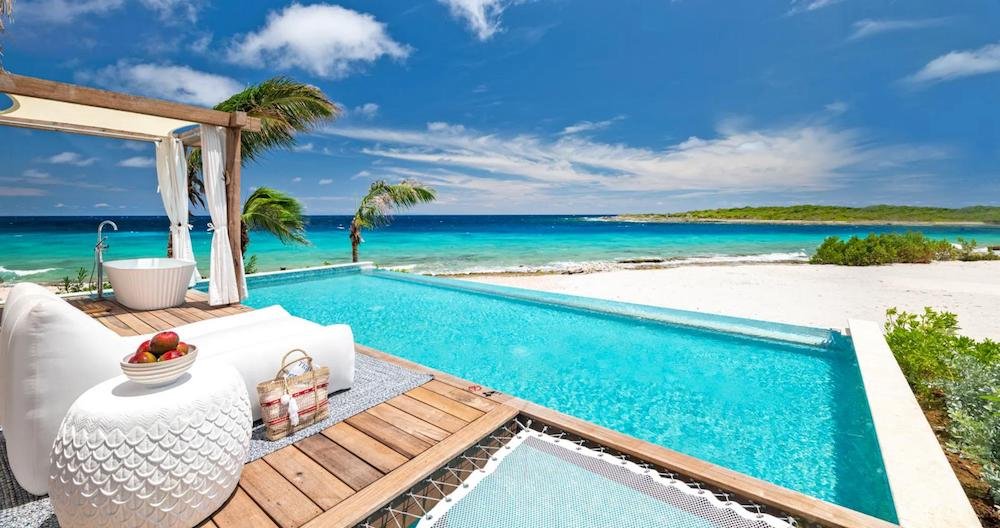
Finding the perfect accommodation in Curaçao is an essential aspect of planning your island getaway.
From luxurious beachfront resorts to cozy boutique hotels, the island offers a diverse array of lodging options to suit every traveler’s preferences and budget.
Overview of Different Regions and Areas
Curaçao’s distinct regions and neighborhoods cater to a variety of interests and lifestyles, each offering its own unique charm and attractions.
- Willemstad: The capital city is divided into two distinct districts, Punda and Otrobanda, known for their vibrant architecture, historic landmarks, and lively waterfront promenades.
- Westpunt: Located on the island’s northwestern coast, Westpunt is renowned for its pristine beaches, tranquil ambiance, and exceptional diving and snorkeling sites.
- Jan Thiel: This upscale coastal area is popular among travelers seeking luxury accommodations, upscale dining, and vibrant nightlife options.
- Pietermaai: Nestled between Willemstad and Punda, Pietermaai is a trendy neighborhood known for its eclectic mix of boutique hotels, art galleries, and culinary delights.
Types of Accommodation Available
Curaçao offers a diverse range of lodging options, catering to various preferences and budgets.
- Hotels and Resorts: From internationally acclaimed resort chains to locally owned boutique hotels, Curaçao boasts an array of accommodations featuring luxurious amenities, stunning ocean views, and personalized service.
- Vacation Rentals: Airbnb and other vacation rental platforms offer travelers the opportunity to experience Curaçao like a local, with an array of villas, apartments, and beachfront cottages available for short-term stays.
- Bed and Breakfasts: For a cozy and intimate retreat, consider staying at one of Curaçao’s charming bed and breakfasts, where warm hospitality and personalized attention await.
Budget Considerations
Travelers visiting Curaçao will find accommodation options to suit every budget, from luxury resorts to budget-friendly guesthouses.
- High-End Accommodations: Luxury resorts and beachfront villas offer unparalleled comfort and amenities, with prices ranging from moderate to premium.
- Mid-Range Options: Boutique hotels, bed and breakfasts, and vacation rentals provide a balance of comfort and affordability, catering to travelers seeking value and quality accommodations.
- Budget-Friendly Choices: Hostels, guesthouses, and budget hotels offer cost-effective lodging options without compromising on comfort or convenience, making them ideal for budget-conscious travelers.
Things to Do in Curaçao

Curaçao offers an abundance of activities and attractions to suit every traveler’s interests, from cultural exploration to thrilling outdoor adventures.
Dive into the vibrant tapestry of experiences awaiting you on this enchanting island.
Exploring Willemstad, the Capital City
Willemstad, with its iconic pastel-colored buildings and UNESCO World Heritage Site designation, beckons visitors to explore its rich history and vibrant culture.
- Punda and Otrobanda: Wander through the charming streets of Punda and Otrobanda, where colonial architecture, bustling markets, and waterfront promenades await.
- Floating Market: Immerse yourself in the sights and sounds of the floating market, where vendors from neighboring countries sell fresh produce and seafood against the backdrop of the Caribbean Sea.
- Historic Landmarks: Discover historic landmarks such as Fort Amsterdam, the Mikvé Israel-Emanuel Synagogue, and the Queen Emma Bridge, offering insights into Curaçao’s colonial past and cultural heritage.
Beach Hopping and Snorkeling/Diving Spots
Curaçao boasts an array of pristine beaches and underwater wonders, inviting visitors to indulge in sun-soaked relaxation and aquatic adventures.
- Cas Abao Beach: Bask in the sun on the powdery sands of Cas Abao Beach, renowned for its crystal-clear waters, vibrant coral reefs, and excellent snorkeling opportunities.
- Playa Kenepa Grandi: Dive into the azure waters of Playa Kenepa Grandi, where colorful marine life and underwater caves await exploration beneath the surface.
- Klein Curaçao: Embark on a boat excursion to Klein Curaçao, a secluded island paradise known for its secluded beaches, turquoise lagoons, and captivating shipwrecks ripe for exploration.
Visiting Historic Sites and Museums
Curaçao’s rich cultural heritage comes to life through its historic sites and museums, offering a glimpse into the island’s past and present.
- Kura Hulanda Museum: Delve into the history of the transatlantic slave trade at the Kura Hulanda Museum, home to an extensive collection of artifacts and exhibits detailing Curaçao’s complex past.
- Landhuis Chobolobo: Explore the historic Landhuis Chobolobo, home to the renowned Curaçao Liqueur Distillery, where visitors can sample the island’s signature Blue Curaçao liqueur.
Outdoor Activities (Hiking, Cave Exploring, etc.)
Adventure awaits around every corner in Curaçao, where outdoor enthusiasts can explore rugged landscapes, hidden caves, and scenic hiking trails.
- Christoffel National Park: Embark on a hiking adventure through Christoffel National Park, home to Mount Christoffel, the highest peak on the island, offering panoramic views of the surrounding coastline and countryside.
- Shete Boka National Park: Discover the dramatic coastal vistas of Shete Boka National Park, where towering sea cliffs, natural blowholes, and sea turtle nesting grounds await exploration.
Nightlife and Entertainment Options
As the sun sets over Curaçao, the island comes alive with a vibrant nightlife scene, offering an array of entertainment options to suit every taste and preference.
- Pietermaai District: Experience the electric atmosphere of the Pietermaai District, where lively bars, jazz clubs, and beachfront lounges beckon visitors to dance the night away under the stars.
- Mambo Beach Boulevard: Indulge in beachside dining, live music, and open-air cinemas at Mambo Beach Boulevard, a bustling entertainment complex overlooking the Caribbean Sea.
Curaçao Cuisine and Dining Experiences
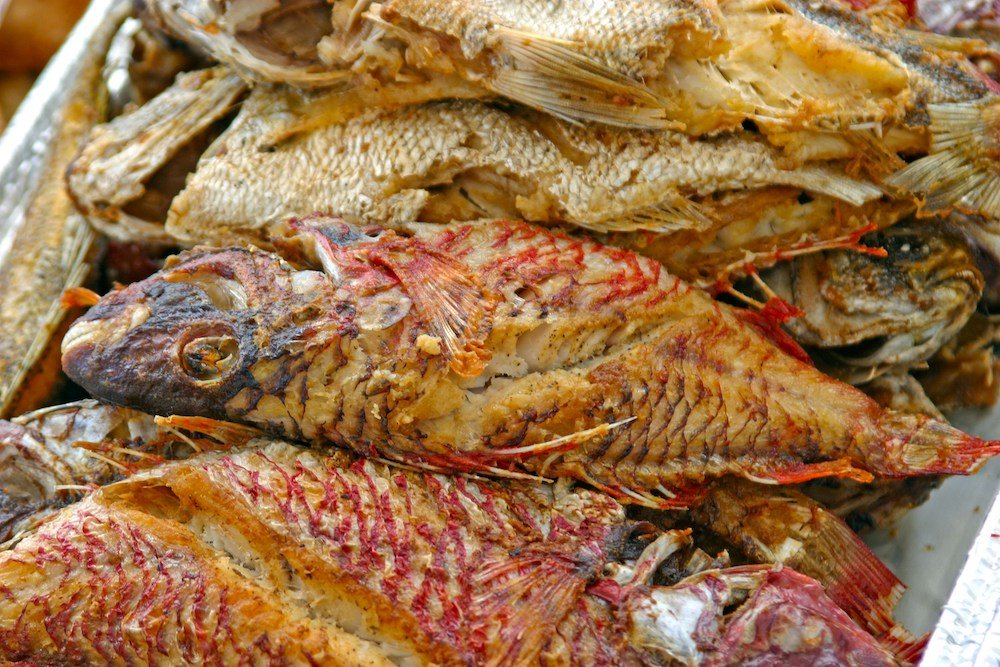
Embark on a culinary journey through Curaçao and discover the island’s rich tapestry of flavors, influenced by its diverse cultural heritage and vibrant local ingredients.
Overview of Local Cuisine and Flavors
Curaçao’s cuisine reflects a harmonious blend of African, European, Caribbean, and indigenous influences, resulting in a tantalizing array of dishes bursting with bold flavors and spices.
- Seafood Delicacies: With its abundant marine resources, seafood plays a prominent role in Curaçaoan cuisine, featuring fresh catches of fish, shrimp, and lobster prepared with local herbs and spices.
- Krioyo Cuisine: Krioyo, meaning “Creole” in Papiamentu, encompasses a variety of traditional dishes showcasing the island’s culinary heritage, including stews, soups, and hearty meat dishes.
- Influences from Around the Globe: Curaçao’s cuisine reflects influences from Dutch, Spanish, Portuguese, and African culinary traditions, resulting in a diverse gastronomic landscape filled with unique flavors and textures.
Must-Try Dishes and Beverages
Indulge your taste buds with a tantalizing array of Curaçao’s signature dishes and beverages, each offering a delightful taste of the island’s culinary identity.
- Keshi Yena: A beloved dish of Dutch origin, Keshi Yena features a savory filling of spiced meat or chicken stuffed inside a hollowed-out Edam or Gouda cheese wheel, baked to perfection.
- Kadushi Soup: Dive into the flavors of Kadushi Soup, a hearty broth made from the prickly pear cactus, locally known as kadushi, infused with vegetables, meat, and spices.
- Blue Curaçao Liqueur: Sample the iconic Blue Curaçao Liqueur, a vibrant blue spirit made from the peels of the island’s native Laraha oranges, boasting a citrusy flavor with a hint of sweetness.
Dining Options and Restaurant Recommendations
Curaçao offers a diverse array of dining options to suit every palate and preference, from seaside eateries serving fresh seafood to upscale restaurants offering international cuisine with a local twist.
- Waterfront Dining: Indulge in waterfront dining at Willemstad’s picturesque harbor, where charming cafes and seafood restaurants offer stunning views of the city’s iconic waterfront.
- Pietermaai District: Explore the vibrant culinary scene of the Pietermaai District, home to an eclectic mix of restaurants, bistros, and eateries serving innovative dishes and artisanal cocktails.
- Local Favorites: Sample authentic Curaçaoan flavors at local eateries and food trucks scattered across the island, where you can savor traditional snacks, street food, and homemade treats.
Cultural Experiences and Festivals
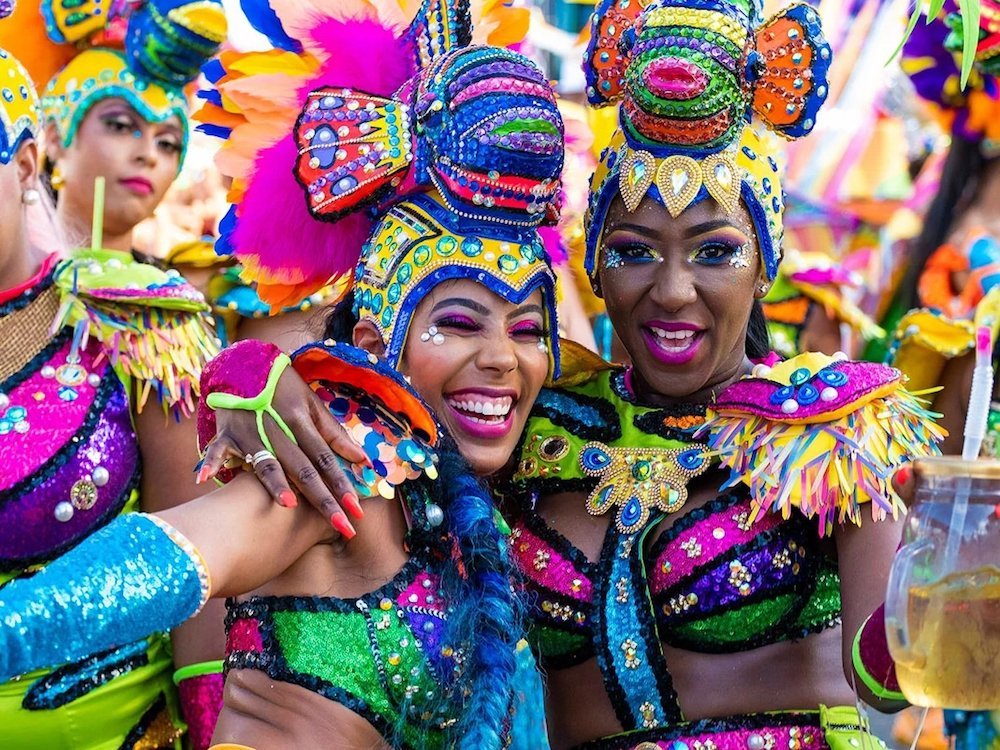
Immerse yourself in the vibrant tapestry of Curaçao’s culture and traditions, where rich history, colorful festivals, and warm hospitality await.
Learning about the Island’s History and Culture
Delve into the captivating history and cultural heritage of Curaçao, a melting pot of influences shaped by centuries of colonization and migration.
- Museum Experience: Explore Curaçao’s museums and cultural institutions, such as the Curaçao Museum and the Maritime Museum, where artifacts, exhibits, and interactive displays offer insights into the island’s past.
- Historic Landmarks: Visit historic landmarks and architectural treasures, including Fort Amsterdam, Landhuis Kenepa, and the Mikvé Israel-Emanuel Synagogue, each bearing witness to Curaçao’s storied past.
- Guided Tours: Embark on guided tours of Willemstad’s UNESCO World Heritage Site, where knowledgeable guides lead you through the city’s cobblestone streets, colonial buildings, and hidden gems.
Attending Local Festivals and Events
Experience the pulsating rhythms and vibrant colors of Curaçao’s festivals and cultural celebrations, where music, dance, and tradition converge in joyous revelry.
- Carnival: Join in the excitement of Curaçao’s Carnival, a lively festival celebrated in the weeks leading up to Lent, featuring parades, music, costume contests, and street parties that showcase the island’s cultural diversity and creativity.
- Seú Dance: Witness the rhythmic beats and intricate footwork of Seú, a traditional Afro-Caribbean dance performed during festivals and cultural events, celebrating the resilience and spirit of Curaçao’s ancestors.
- Dia di Bandera: Celebrate Dia di Bandera, Curaçao’s Flag Day, commemorating the island’s autonomy within the Kingdom of the Netherlands with flag-raising ceremonies, cultural performances, and community gatherings.
Interacting with Locals and Experiencing Traditional Practices
Engage with the warm and welcoming people of Curaçao, who eagerly share their traditions, customs, and way of life with visitors from around the world.
- Local Markets: Explore local markets and artisanal shops, such as the Floating Market and Marshe Bieuw, where vendors sell fresh produce, handmade crafts, and traditional delicacies, providing a glimpse into daily life on the island.
- Community Events: Participate in community events and cultural workshops, where locals share their culinary secrets, musical talents, and artistic skills, fostering meaningful connections and cultural exchange.
- Homestay Experiences: Embrace the opportunity for homestay experiences with local families, where you can immerse yourself in Curaçaoan hospitality, cuisine, and traditions firsthand, creating cherished memories and lifelong friendships.
Practical Tips for Visitors

Ensure a smooth and enjoyable journey to Curaçao with these practical tips designed to enhance your travel experience and ensure your well-being throughout your stay.
Transportation Options Within the Island
Navigating Curaçao’s diverse landscapes and attractions is made easy with a variety of transportation options available to visitors.
- Rental Cars: Renting a car offers the flexibility to explore the island at your own pace, with well-maintained roadways and clear signage making navigation straightforward.
- Public Transportation: Curaçao’s public transportation system includes buses and vans known as “busetas,” providing affordable and convenient options for getting around the island, particularly in urban areas.
- Taxi Services: Taxis are readily available at major tourist hubs and airports, offering metered fares for transportation to popular destinations and attractions.
Safety Precautions and Emergency Contacts
Prioritize your safety and well-being by familiarizing yourself with local safety precautions and emergency contacts.
- Crime Awareness: While Curaçao is generally considered safe for travelers, exercise caution in crowded areas and tourist spots, and avoid displaying valuables in public.
- Emergency Contacts: Save essential emergency contacts, including local police, ambulance services, and your country’s embassy or consulate, in case of unforeseen circumstances or emergencies.
Health and Medical Facilities
Stay healthy and prepared for your journey by considering essential health and medical considerations.
- Medical Facilities: Curaçao boasts modern medical facilities and hospitals, with English-speaking staff available to assist travelers in need of medical attention.
- Travel Insurance: Consider purchasing travel insurance to provide coverage for medical emergencies, trip cancellations, and other unforeseen events during your stay in Curaçao.
- Health Precautions: Stay hydrated, use sunscreen, and protect yourself from mosquito bites to prevent sunburn and mosquito-borne illnesses while exploring the island.
Sustainable Tourism Practices
Contribute to the preservation of Curaçao’s natural beauty and cultural heritage by embracing sustainable tourism practices during your visit.
- Responsible Waste Management: Dispose of waste responsibly and recycle whenever possible, minimizing your environmental footprint and supporting efforts to keep Curaçao’s beaches and landscapes pristine.
- Respect Local Customs and Traditions: Embrace cultural sensitivity and respect local customs and traditions, including dress codes, photography etiquette, and interactions with indigenous communities.
- Support Local Businesses: Patronize locally owned businesses, restaurants, and artisans, contributing to the island’s economy and fostering authentic cultural experiences for future generations of travelers.
Souvenirs and Shopping in Curaçao
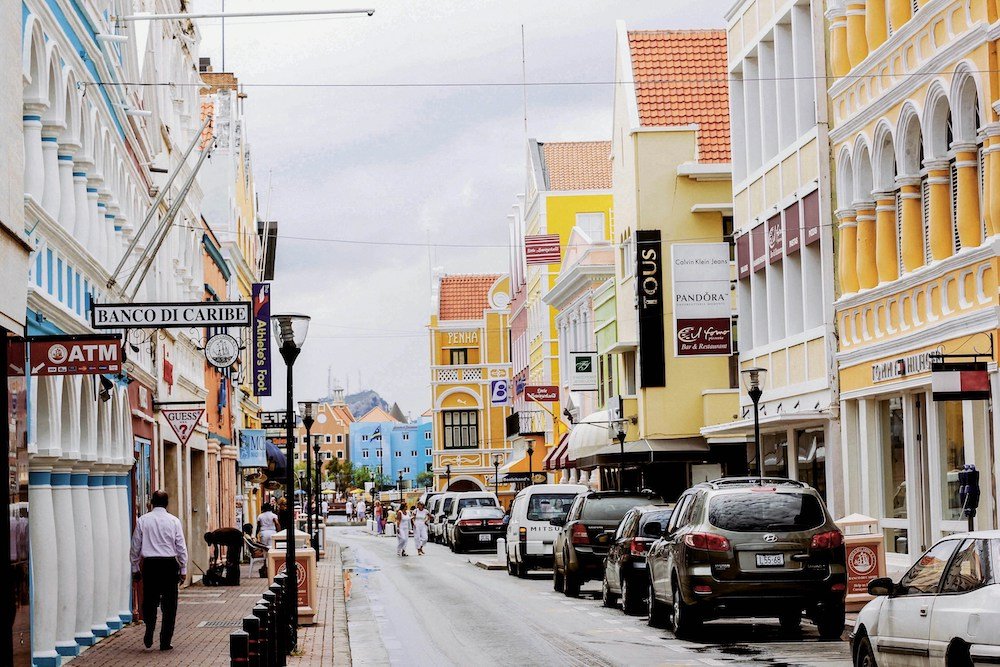
Take home a piece of Curaçao’s vibrant culture and craftsmanship with unique souvenirs and treasures found across the island’s charming shops and markets.
Popular Souvenirs and Handicrafts
Discover a treasure trove of authentic souvenirs and handcrafted keepsakes that capture the essence of Curaçao’s cultural heritage.
- Dutch Delights: Bring home a taste of Dutch influence with traditional Delft Blue pottery, wooden clogs, and artisanal cheeses crafted locally on the island.
- Local Artisans: Support local artisans and craftsmen by purchasing handmade items such as intricately woven baskets, vibrant textiles, and indigenous artwork showcasing Curaçao’s natural beauty and cultural diversity.
- Blue Curaçao Liqueur: Commemorate your visit with a bottle of Blue Curaçao Liqueur, a quintessential souvenir distilled from the island’s flavorful Laraha oranges and renowned worldwide for its vibrant blue hue and citrusy taste.
Best Shopping Districts and Markets
Embark on a shopping adventure through Curaçao’s bustling districts and vibrant markets, where you’ll find a kaleidoscope of shopping experiences to suit every taste and budget.
- Punda’s Shopping Promenade: Explore the charming streets of Punda, where historic buildings house an eclectic mix of boutiques, galleries, and souvenir shops offering everything from handmade crafts to luxury goods.
- Floating Market: Immerse yourself in the vibrant sights and sounds of the Floating Market, where colorful boats laden with fresh fruits, vegetables, and seafood dock along Willemstad’s waterfront, creating a lively atmosphere perfect for browsing and bargaining.
- Renaissance Mall & Rif Fort: Indulge in upscale shopping at Renaissance Mall, nestled within the historic Rif Fort, where designer boutiques, duty-free shops, and chic cafes cater to discerning shoppers seeking luxury and style.
- Marshe Nobo: Experience the hustle and bustle of Marshe Nobo, Curaçao’s largest indoor market, where vendors peddle an array of goods ranging from local produce and spices to handicrafts and souvenirs, providing a sensory feast for shoppers.
Conclusion
As you conclude your journey through this comprehensive guide to Curaçao Island, you’ve embarked on a virtual voyage through the vibrant landscapes, rich culture, and unforgettable experiences that await you on this Caribbean gem.
Throughout this guide, we’ve explored the essential aspects of planning, experiencing, and savoring the wonders of Curaçao:
- Planning Your Trip: From choosing the best time to visit to understanding visa requirements and currency matters, careful planning ensures a seamless and enjoyable journey to Curaçao.
- Exploring Curaçao’s Beauty: Whether you’re strolling through the colorful streets of Willemstad, diving into the azure waters of its pristine beaches, or immersing yourself in its rich history and culture, Curaçao offers a myriad of experiences to captivate and enchant travelers of all ages and interests.
- Indulging in Culinary Delights: From savoring traditional Krioyo dishes to sampling Blue Curaçao Liqueur, Curaçao’s culinary scene tantalizes the taste buds and offers a flavorful glimpse into its cultural heritage.
- Embracing Cultural Experiences: Whether attending vibrant festivals, exploring historic landmarks, or engaging with locals, Curaçao’s rich cultural tapestry invites visitors to immerse themselves in its traditions, celebrations, and warm hospitality.
- Practical Tips and Sustainable Tourism: By embracing sustainable tourism practices and prioritizing safety, health, and responsible travel, visitors can contribute to the preservation and enjoyment of Curaçao’s natural beauty and cultural heritage for generations to come.

FAQ’s About Curaçao Island in the Caribbean:
Is Curaçao cheap or expensive?
Curaçao can be considered moderately priced compared to other Caribbean destinations.
While it offers a range of accommodations and dining options to fit various budgets, prices for tourist activities and amenities can be on par with more developed tourist destinations.
What country owns Curaçao?
Curaçao is an autonomous country within the Kingdom of the Netherlands.
It is one of the five constituent countries of the Kingdom, along with the Netherlands, Aruba, Sint Maarten, and Bonaire.
Is Curaçao a good island to visit?
Yes, Curaçao is widely regarded as a fantastic destination for travelers seeking a mix of stunning beaches, rich cultural experiences, and outdoor adventures.
Its vibrant culture, historical sites, and diverse landscapes make it an attractive destination for tourists.
What is the island of Curacao known for?
Curaçao is known for its vibrant culture, colorful architecture, and pristine beaches.
It’s also renowned for its Blue Curaçao liqueur, which is made from the dried peels of the laraha citrus fruit, native to the island.
How safe is it to go to Curaçao?
Curaçao is generally considered safe for tourists.
While petty theft and crime exist, especially in urban areas, the island maintains a relatively low crime rate compared to many other destinations.
As with any travel, it’s advisable to take common-sense precautions to ensure personal safety and security.
What are the downsides of Curaçao?
Some visitors may find that Curaçao lacks the extensive resort infrastructure and nightlife scene of other Caribbean destinations like Aruba or the Dominican Republic.
Additionally, some areas of the island may experience occasional trash and debris due to environmental issues.
Are the beaches in Curacao swimmable?
Yes, the beaches in Curaçao are generally safe and swimmable. Many beaches boast calm, clear waters ideal for swimming, snorkeling, and other water activities.
However, it’s always wise to check for any posted warnings or advisories regarding water conditions.
Is Curacao safe for female travelers?
Curaçao is considered relatively safe for female travelers.
Like any destination, it’s essential to exercise caution, especially when traveling alone or at night.
Respect local customs and dress modestly when appropriate to avoid unwanted attention.
Are mosquitoes bad in Curacao?
Mosquitoes can be present in Curaçao, particularly during the rainy season, which typically runs from October to December.
While mosquitoes are not usually a significant nuisance, it’s advisable to use insect repellent and take other precautions to prevent mosquito bites, especially if you’re sensitive to them or concerned about mosquito-borne illnesses.
